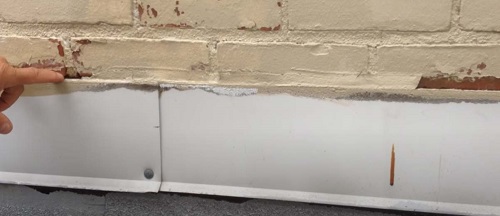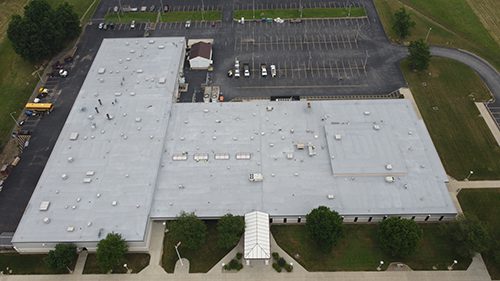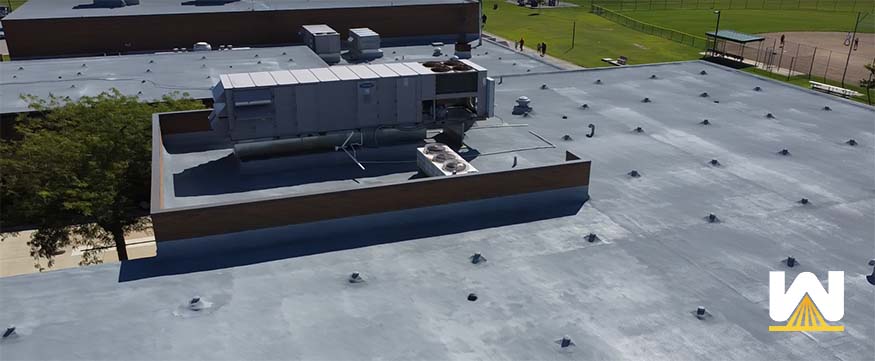Perhaps you’re a property owner who’s had multiple issues with flashing a vertical wall?
You’ve tried “patching,” but that’s only worked for a few months. It’s time to think about a different option and get rid of the headache.
In this article, you’ll learn:
- A quick introduction to fluid-applied roofing system #1 – spray foam
- A quick introduction to fluid-applied roofing system #2 – silicone roof coatings
- The problems non-fluid-applied roofing systems have
Spray foam and silicone coatings are seamless and fluid-applied, creating a smooth transition when meeting a vertical wall.
Please watch the 30-second video below which shows our training facility. We are simulating a curb, skylight, wall, or HVAC unit becoming “a part” of the flat roof:
Here’s an intro to spray foam roofing:
Spray foam is a combination of two heated chemicals that produce a liquid that gets installed onto a roof. The liquid fully adheres to an existing roof and grows to 1-2” in thickness when it’s done curing.
Spray foam will degrade when exposed to UV rays; therefore, two coats of silicone coating (and optional granules) are installed over the foam for protection.
Here’s a video of a complete spray foam roofing installation:
How does spray foam flash a vertical wall?
It’s simple. A spray foam installer sprays foam up a vertical wall like any other structure. With foam being fluid-applied, it’s easy to transition from a flat area to a vertical wall.
No flashing metal, adhesives, sealants, screws, or plates are involved.
Here’s an intro to silicone roof coating systems:
Silicone roof coatings are engineered for roofing purposes. The adhesion, elongation, waterproofing, UV resistance, and tensile strength are all designed to surpass their warranty length.
The warranty length is determined by the thickness of the coating, for example:
- A 20-mil thickness grants a 10-year warranty.
- A 30-mil thickness grants a 20-year warranty.
The most crucial part of installing a coating system is the preparation. The surface needs to be super clean, and an adhesion test must be performed to ensure the coating will stick properly.
Here’s a video of a complete silicone roof installation:
How do silicone roof coatings flash a vertical wall?
With silicone roof coatings being a fluid-applied product, it’s as easy as rolling the material up a wall. Depending on the wind, the coating is sprayed out of a gun or manually rolled. Either way, it’s easy to flash a vertical wall with silicone coatings.
What’s wrong with non-fluid-applied systems?

Every roofing system can properly flash a vertical wall. The problem is that there’s more room for error. When a contractor needs to use flashing materials, nails, adhesives, and they need to custom-cut rubber sheets; there’s a possibility of installer error.
It’s much more error-proof to spray up a vertical wall with a fluid-applied roofing system.
Conclusion
Consider a fluid-applied roofing system if you’re having issues where a flat roof meets a vertical wall. This way, very few variables are involved in making the vertical wall watertight.
And suppose you have a large, commercial roof with tons of vertical walls (like the image below). In that case, you should consider installing a fluid-applied roof.

If you’d like to learn more about spray foam or silicone roof coating systems, here are some helpful articles:


